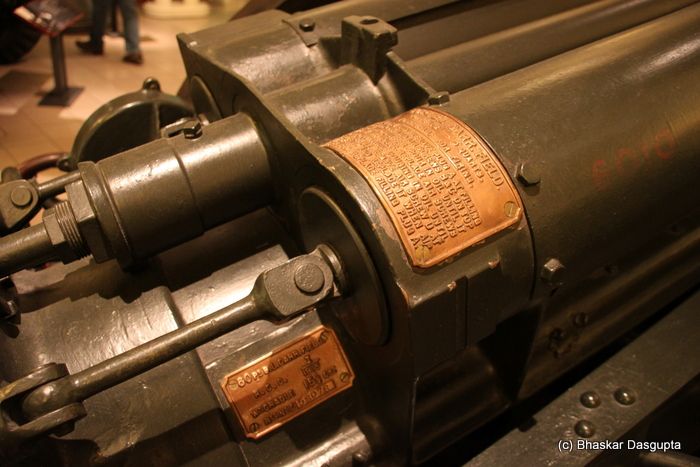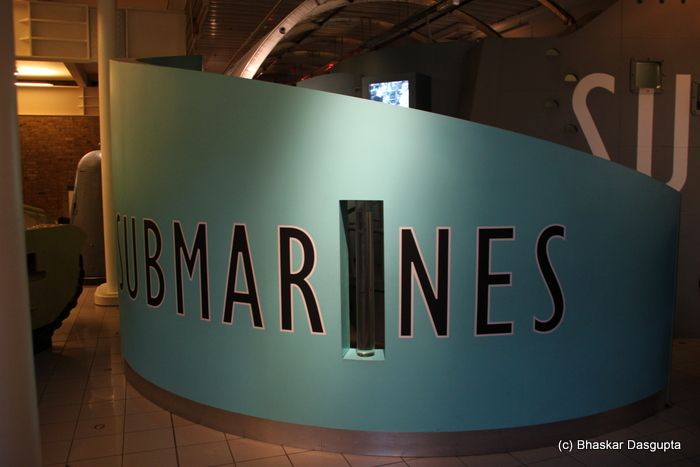This is the fifth photo essay on my visit to the Imperial War Museum.
The corner of the ground floor has this dedicated exhibit on submarines, mainly the early part of the last century and the war time boats. 
This is an exhibit showing what a submariner would see in the galley and also what his meals would have been. Fascinating, they actually have the old style packaging and utensils. 
A row of 3 bunks. This reminded me of the 3 Tier carriages in Indian Railways. 


Here is a model of the bog. There is a complicated process to follow, and if you don't follow it, then erm, the stuff comes back at you. This is the origin of the statement, “getting your own back”. I don't think it would be fun, lol. 
A Davis Submerged Escape Apparatus. To be used by submariners.

This is a horned mine. Its usually sunk to the bottom with a cable and floats up to just below the surface, just waiting for a ship to go past and hit one of those horns. 
Dating back to 1917. Lethal little critter. 
And here’s the Matilda tank of North Africa fame. This wasn't a particularly good tank, even though its armour was massive and would protect the crew from almost anything. 
The turret had a, surprisingly, very small 40mm gun. Not powered enough and didn't have a high explosive shell. Made it a bit useless. 

Now here’s some serious horsepower in play. This is the British 5.5 inch Mark III Medium Gun. Pretty extensively used, this was also used by the Indian Army against Pakistan. Big momma, could fire a 82 pound shell to 18100 yards. 
Next to it was its older brother from WW1. Look at the wheels, it was designed to be pulled by horses as well as mechanised vehicles. 
The two barrels on either side are the components of the recoil system. 
The manufacturing labels. 
Some of the scales which were used for aiming. There were serious numbers used in WW1. You might have seen the devastated landscapes of the WW1 battlefields. Like this one.
These howitzers were what caused this moonscape of craters filled with water, shattered trees and mud mixed with the body parts and blood of men. Sad

This is a portable air raid shelter, and could contain up to 2 people. Mainly used in places where key personnel had to stay out in the open, out of reach of conventional shelters. Can you imagine yourself cowering inside this bell like structure? Being pinged with shrapnel, flying masonry and not knowing if you are going to survive?




No comments:
Post a Comment